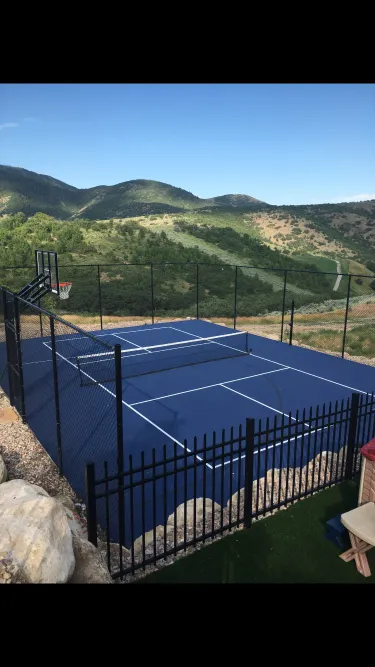When it comes to tennis, pickleball, or basketball, the surface beneath your feet plays a bigger role than you might think. Proper court surfacing isn’t just about appearance—it’s about performance, safety, and long-term playability. Whether you’re installing a new court or resurfacing an old one, the quality of the surface will directly impact how the game feels and how athletes perform.
The Link Between Surface and Play Quality
Court surfacing affects everything from ball bounce to foot traction. A well-constructed, properly coated court provides a consistent surface that allows for accurate ball response and smooth movement. Here’s how surface quality influences performance:
1. Consistent Ball Bounce
Uneven, cracked, or improperly finished surfaces can cause unpredictable ball bounce. This affects reaction time, accuracy, and player rhythm. A professional-grade surface ensures consistency, which is essential for competitive and recreational play alike.
2. Traction and Player Movement
Good court surfacing provides optimal grip for athletes, reducing the risk of slipping and enhancing agility. Poor traction can result in falls, missed steps, or even injuries. A well-finished surface gives players the confidence to move quickly and change direction with control.
3. Joint and Muscle Impact
A court that’s too hard or uneven can increase stress on joints, particularly in high-impact sports like basketball. Proper surfacing helps absorb some of that shock, reducing fatigue and lowering the risk of strain or injury over time.
4. Durability and Maintenance
High-quality court materials and professional surfacing extend the life of your court. They resist cracking, fading, and wear caused by foot traffic, UV rays, and weather exposure. This reduces the need for frequent repairs and ensures a playable surface year-round.
Choosing the Right Surface
Different sports and use cases call for different surface types. Here are a few common options:
- Acrylic surfaces – Ideal for tennis and pickleball courts, offering consistent ball bounce and weather resistance.
- Concrete with acrylic coating – Long-lasting and great for multi-sport courts.
- Asphalt courts – Cost-effective for larger installations, though they may require more frequent maintenance.
Professional Installation Matters
Even the best materials won’t perform well if they’re poorly installed. Precision grading, proper drainage, and expert coating application are essential for long-term court performance. Professional installers understand how to prep and finish a court to meet both recreational and competitive standards.
Final Thoughts
A well-surfaced court isn’t just a luxury—it’s a game-changer. From improved safety to enhanced gameplay, the right surface makes every serve, pass, and shot count. If you’re ready to upgrade or install a court, don’t cut corners. Contact us to ensure your court is built for performance and longevity.

